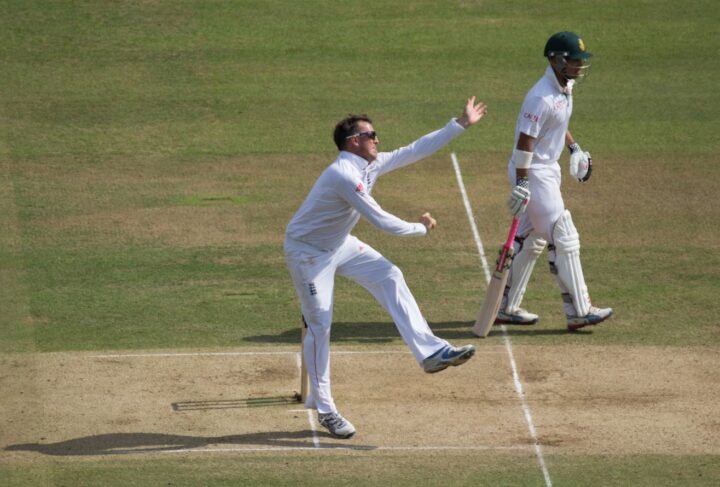Money makes the world go round and cricket cannot escape it. The recent IPL broadcasting deal has meant that a single IPL match carries the second highest value of any single sports match behind the NFL. That is mental. We are now dealing with games of cricket in monetary terms that have been unheard of throughout the entire history of the game. And it now means private ownership is taking over the game.
It has now been reported that all of the six franchises in the up-coming South African T20 league have been bought by owners of IPL sides. This shows the clear state of cricket boards and their funding. They are realising that private ownership is the most efficient way to inject money into their game, attract the best players with this money and then market these best players to make money from spectators, advertising and TV rights. However private ownership means that boards lose control of their schedule to placate these investors. No one has the interest or capital to out-bid the owners of the IPL sides, as shown in the South African deals and these owners will eat into the property of the boards.
South Africa forfeited a three match ODI series vs Australia, threatening their automatic qualification for the next World Cup, to prioritise this domestic T20 tournament. This also jeopardises their relationship with Cricket Australia who will have lost a significant amount of income from the ticket sales and broadcasting rights of this series, especially considering that this new South African franchise league, as well as another in the United Arab Emirates, are in direct competition with the Australian Big Bash.
So what we are seeing is cricket boards moving away from relationships between each other and towards private owners. This will dilute the power of the big-three nations: India, England and Australia, but place it into the hands of owners who are more likely to sacrifice the traditions of international Test Match and ODI cricket in favour for their own T20 leagues. There’s the possibility that an owner of an IPL side could invest in numerous franchise sides in different leagues and essentially have a year long IPL…
The Knight Riders Group, originally from Kolkata, now has a Caribbean franchise in Trinidad and Tobago, a Los Angeles franchise in the planned Major League Cricket, and they have also been in conversations with the UAE T20 League for a Abu Dhabi franchise as well. A player could play in the UAE for Abu Dhabi Knight Riders in December and Jan, then in India for KKR in April and May, in LA in June and July, and finally in the CPL for Trinbago in September. No doubt at some point they join up September and December for a whole 12 month cycle, all for one franchise, one coaching and backroom staff, one XI. Unfortunately the boards won’t be able to compete and they will lose their players.
Ultimately, players are going to go towards whoever will pay them the most. David Warner has expressed interest in playing in the UAE league rather than playing in his home country’s Big Bash. And you can’t blame them for it because at the end of the day it’s their career and they have dependents relying on them. Plus, especially with non big-three nations, there isn’t a lot of money in the game if those players decide not to play franchise cricket; Michael Holding tells a story that the first time he ever saw a comma in his bank account was when he played in Kerry Packer’s World Series Cricket.
Money has controlled the game for years but the rise of franchise cricket places pressure on any other form of cricket, especially the 50 over game. The Royal London One Day Cup has been relegated to a 2nd XI tournament that is out of the public eye and countries have had no issue backing out of an ODI series. The ICC Super League is a failing attempt to revive interest in this format.
Test Match Cricket is also at risk. It’s very well reported that for the big nations, matches against smaller ones make less money. Ravi Shastri’s comments that only the Top 6 nations should play Test Cricket shows how money is changing the match. There’s potential for the big 3 to alternate in Test Match series between their franchise leagues and disregard the smaller nations. We are quickly heading towards T20 Cricket being the face of cricket, with Test Matches being an annual revival of an archaic tradition.
Cricket is making more money than it ever has before and has shown no sign of slowing down. In the past, this money has gone to players and boards to do as they see fit. Part of this is distributing it into grassroots and pathways to develop new players and improve facilities for the everyman of cricket. With private ownership and the ruthless nature of rampant capitalism, will money trickle down? Or is it more likely that the gap between the wealth of the professional game and the amateur game widens, disenfranchising people that have played cricket every Saturday for years, and threatening the talent pool and growth of our beautiful game?
Thomas Rose









Professional sport is a business, so the businessmen who donate the cash, supply the media coverage and attract the sponsors will want to run it and their ethos of dumbing it down so as to attract as many people as possible and bring in the cash will continue to dominate. You see it in all forms of entertainment. Look at the way footie and golf are operating. Difficult to see how any sport can resist what has always been a massive temptation to players and administrators alike. Sorry to be such a pessimist, but cricket has always reflected the changes in society better than any other sport.
The forms of the game that flourish need not have any connection to what people are watching – or want to watch.
90% of the game’s revenue comes from TV rights. Spectators are just a backdrop for the TV coverage (those cardboard cut-outs used during convid made that explicit). TV companies are owned by rich oligarchs and depend on advertsing from companies run by other rich oligarchs. Money isn’t these people’s main motivation, they already have more money than most of use can imagine and once they get into banking they can magic money into existence anyway. Protecting their position and pushing certain ideas to remake the world as they’d like it are more drivers of their actions than money.
If the TV companies don’t believe people are going to watch it they won’t put it out. They all want people to watch their channel, so TV rights just reflect their market research.
The problem they’re all having now is people are beginning to tire of the repeats and endless adverts on cable and are transferring to streaming through firesticks and the like, exactly what’s happened with music. Sky, Virgin, BT and the terrestrial channels are fast becoming dinosaurs.
If increased investment means more money being invested in the game at grassroots level, that should be a good thing.
The franchise format also seems to be attracting a new generation of cricket followers, with more families attending the games.
It is a cause of concern that the so-called Big Six test playing nations may attempt to continue consolidating their control over the game.
There are big decisions to be made in the months and years ahead.
I think the accumulation of money is always going to be a driver for certain people, it always has been throughout history, they just can’t get enough of it. And it brings power which is a big drug for some as well.
The possible long-term outcome of this is where will cricketers of the future come from? I don’t see grassroots cricket flourishing here especially if very little money goes into it, it’s not a game kids play in the street or the park as they might have done years ago. You need so much more equipment than you do for say a game of football which is what you usually see being played everywhere. I guess India will always have lots of youngsters playing but they say the Caribbean has few, interesting to know what others think about places around the world like Australia, South Africa, Pakistan. How much grassroots cricket is actually played there?
I’m sceptical about the amount of equipment needed to play entry-level cricket–all you need is one bat, a tennis or tape ball, and maybe a piece of chalk to chalk stumps on a wall. Is that really much more expensive than a football?
I agree : the reddest of herrings !
If grasssroots cricket does see money disappearing, and reduced player numbers, the future talent pool becomes smaller, which in turn means that the “product” offered in major T20 leagues (for this purpose, I would include the Hundred as a T20 league) becomes worse. No savvy businessman is going to agree to a system which weakens their product over time.
Who are the test cricket “Big 6”? If you go by the rankings, it’s currently Australia, India, South Africa, England, New Zealand and Pakistan. Whatever the fortunes of the current West Indies team, it’s hard, especially for those of us around in the late 70’s and 80’s, to imagine test cricket without West Indies. It’s also fair to point out that, I think, most cricket lovers want to see tests against a wide variety of opposition. Playing the same teams all the time gets boring.
It’s also fair to point out that cricket players and administrators have always clashed about money. I believe the dispute between the West Indies Board and the players is about to celebrate its golden jubilee!*
*This may not be entirely true, but Garry Sobers always played for the teams offering him the best money, and “83” was all about money.
In summary, the author’s argument is correct IF T20 leagues don’t increase the overall size of the cake. If they do, and more money is ploughed back into grassroots and longer form cricket as a result, the good should outweigh the harm. However, this does also require some care and thought on the part of the ICC and the country Boards. Oh.
The attitude of the ICC and the boards is already clear. The ICC, like good capitalists everywhere, see it as an operation of the free market and as something for the boards to regulate (or not!) themselves: that’s precisely what they said last week, and what they were suggesting even when the last FTP was published in 2017.
And the boards are busy carving out FTP windows for their own franchise tournaments, which collectively will squeeze international into a series of increasingly tight windows (only NZ of the top nine don’t have one now). They’re cancelling series completely when they clash with franchise tournaments, they’re replacing FTP commitments to test matches with white-ball cricket, and they’re shortening their test seasons (the new FTP apparently doesn’t include an single series not involving the “Big Three” which is more than two tests long; South Africa have six home tests in total in three seasons at one stage)…and the boards have agreed to that.
And the boards and the ICC don’t have control anyway–in a similar way to how much governance is controlled not by governments but by big corporations and rich individuals. One of the buried points in Ronay’s article was that one of England’s captains will from next year be paid more by his IPL franchise than by England. So where will his primarily loyalty lie if there are scheduling conflicts (which there already are–he’s scheduled to play an ODI series in South Africa in January/February which clashes with SA’s own franchise tournament for which they’ve already withdrawn from an ODI series even though it seriously jeopardises their qulaification for the World Cup).
As you say, Oh! Don’t hold your breath folks!
Somebody gets it (or at least most of it):
https://www.dumpguardian.com/sport/blog/2022/aug/13/cricket-is-about-to-reach-tipping-point-with-power-grab-of-alternative-season
The bits he doesn’t get:
1) The obligatory defense of franchises.
2) The fact that franchises won’t be “pension top ups” (which nobody much would object to) – they will be the salary and the pension.
3) The structural inequalities from how different countries can cope with this (although those may not last much longer – nobody’s going top resist for much longer).
4) The implications for a team game with no teams that nobody identifies with or cares about.
5) The implications for the game when the short-form has completely taken over. Isn’t it obvious people will get sick of it?
Re 1) and 2)–I’m not convinced you’re reading that correctly: I think all he’s pointing out about franchises generally is that lots of people like franchise cricket (which is true–if they didn’t the grounds would be empty!), and he clearly recognises that Boult’s case is not the same as that of a lot of players. He recognises I think that for Smeed the franchise will be both salary and pension. What I think he doesn’t acknowledge is those who will be left completely without salary or pension–Smeed, for example, will be fine, but what about George Hill or Felix Organ?
Re 3)–I would agree that (almost) nobody is going to resist for much longer…but there are two major exceptions even to this evenly strructured inequality. India will be OK no matter what, because they generate so much of global cricket’s income that they will be able to dictate what terms the game goes forward on. And, unless regional geopolitics changes dramatically, the takeover of franchises by the IPL owners will lead to the almost total exclusion of Pakistanis from professional cricket once international cricket folds.
Re 4) and 5)–here I think you’re making a common mistake of English cricket blogs and commenters, which is to assume that what white middle-aged English men think about cricket is the same that everyone thinks about cricket. Will people get sick of it? You will (or already are!) and so will I–but if everyone did then grounds for the Championship or the Royal London would be looking like crowds from pictures of Headingley in the 1950s and for the Hundred, the Blast, the IPL and the BBL would be empty.
Likewise, YOU don’t identify with franchise teams. But what about people who see teams as more like the brands that football teams are (Manchester teams without any Manchester players appealing to people who probably couldn’t have identified Manchester from Mannheim before they got into football)? What about people from other countries where loyalties are more city-based: do you think that no Mumbaians at all identify with MI, for example? What about people for whom counties mean nothing–which might be most people much under 50: Middlesex hasn’t existed since 1974, nor has Birmingham been in Warwickshire, Bristol in Gloucestershire, Manchester in Lancashire and so on. What about people who are actively repelled by the whiteness/middle-classness/rural-and-small-townness of the counties and see themselves more as, say, Mancunians than Lancastrians–for whom the identity of a Hundred team might be a refreshing antidote to the counties?
There’s one other major omission in Ronay’s article–the other countries that the IPL owners are sniffing round. Judging from MI’s recent tour, they’ve got their eye on a share of the English market. And I’d be amazed if they didn’t invest in Major League Cricket in the USA, which is due to start next summer–a country which apparently has the fourth biggest broadcast market for cricket in the world plus a lot of people with South Asian roots. Put together, that would take over most of the northern summer as well as the southern, and (with a second IPL annually, which will come within five years or so) would mean that literally the whole year apart from a few weeks for an ICC tournament could be filled with franchise tournaments. Which would kill international cricket–and therefore domestic cricket except maybe T20–stone dead.